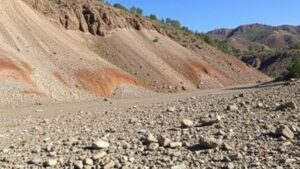Mineralogy for Prospectors: Identifying Gold’s Natural Companions
Mineralogy for Prospectors: Identifying Gold’s Natural Companions
Mineralogy, the study of minerals and their properties, plays a critical role in prospecting and mining activities, particularly in the context of identifying golds natural companions. Understanding which minerals often occur alongside gold not only enhances a prospector’s chances of finding valuable deposits but also informs extraction strategies. This article explores the mineralogical aspects relevant to gold prospectors, focusing on the most common minerals associated with gold, their identification, and the insights they provide in mineral exploration.
The Importance of Mineral Associations
In mineral exploration, identifying the associations of minerals is vital. Gold is rarely found in isolation; instead, it commonly occurs in conjunction with various other minerals. Recognizing these relationships enhances the probability of discovery and offers insights into the geological environment of the mineral deposits. For example, the presence of specific minerals can indicate the type of ore deposit and its potential value.
Common Minerals Associated with Gold
Prospectors should familiarize themselves with minerals that are frequently found alongside gold, as these can serve as indicators of its presence. Below are some of the primary minerals to look out for:
- Quartz: Gold often occurs within quartz veins. The presence of quartz can indicate potential gold deposits, particularly in hydrothermal systems.
- Pyrhotite: This iron sulfide mineral is commonly associated with gold in sulfide deposits. Its identification can lead prospectors to gold-rich areas.
- Calcite: Often found in association with gold in sedimentary deposits, calcite can indicate areas of mineralization.
- Galena: Lead sulfide, or galena, is frequently found alongside gold in polymetallic veins and may imply golds presence.
- Sphalerite: As a zinc sulfide mineral, sphalerite can signify rich sulfide deposits that often harbor gold.
Identifying Mineral Companions
Identification of the minerals associated with gold can be achieved through a combination of fieldwork and laboratory analysis. Here are practical methods used by prospectors:
- Field Identification: Prospectors often rely on visual cues, such as color, luster, and crystal habit, to identify minerals in the field. For example, knowing that quartz usually forms clear or white crystals can help in immediately spotting potential gold-bearing formations.
- Geochemical Analysis: Conducting soil tests for trace elements can reveal the presence of gold and its accompanying minerals. A geochemical survey might show elevated levels of lead, zinc, or arsenic, indicating potential gold deposits.
- Geophysical Techniques: Methods like magnetic survey and induced polarization can detect anomalies associated with mineral deposits, helping locate gold-bearing areas without extensive drilling.
Real-World Applications and Case Studies
Numerous successful gold mining operations owe their achievements to an understanding of mineral associations. For example, the Carlin Trend in Nevada is renowned for its rich gold deposits, primarily found in association with sulfide minerals like pyrite and arsenopyrite. The extraction techniques employed in this area have been refined through decades of study regarding the mineralogy of gold.
Similarly, in the Witwatersrand Basin of South Africa, gold is extracted from conglomerate deposits that often contain pyrite and quartz. Prospectors who understand these associations can better navigate the geologically complex environments where gold is located.
Conclusions and Actionable Takeaways
Mineralogy plays an essential role in the successful identification and extraction of gold. By understanding the minerals that commonly accompany gold, prospectors can increase their chances of finding significant deposits. Here are key takeaways for prospectors:
- Familiarize yourself with common minerals associated with gold, such as quartz and sulfide minerals.
- Use both field identification techniques and laboratory analysis for mineral identification.
- Stay informed about geological locations known for specific mineral combinations to enhance exploration strategies.
By integrating mineralogical knowledge into prospecting practices, individuals in the field can enhance their efficiency and success in finding gold deposits, making mineralogy an indispensable tool for modern prospectors.



